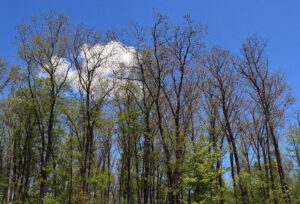
Carefully scraping spongy moth egg masses off trees and into a cup of soapy water will help to hold down caterpillar damage in 2025. / Photo Credit: Bill McNee, Wisconsin DNR
By Bill McNee, DNR Forest Health Specialist
Bill.McNee@wisconsin.gov or 920-360-0942
The Wisconsin Department of Natural Resources (DNR) encourages property owners to examine their trees for spongy moth egg masses and determine whether control measures are needed this spring.
Property owners who have oak, birch, crabapple, aspen, willow and linden (basswood) trees should be particularly watchful because the caterpillars of this invasive insect prefer these species. However, they will feed on many other kinds of trees and shrubs.
Continue reading “DNR Urges Spring Spongy Moth Treatment Plans”

